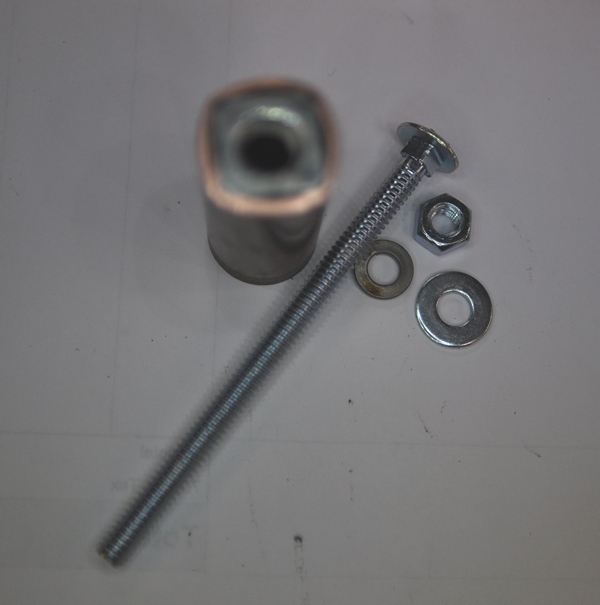Annealing:
I decided it was time to try my hand at annealing. There are lots of good links on the net with instructions so I won’t repeat them here but I used the air cooled method rather than dropping the hot cases in cold water. It gives the same result and you don’t have to dry the cases. I had the torch and drill so all I needed was something to spin my cases. I looked around my shop and located some items I was pretty sure would do the job.

First I took about an inch and a half off a piece of 3/4″ copper pipe I had lying around. At first I thought I was going to saw some tabs in the pipe and fold them over to form the base but I got the idea to try to find something to stick into the pipe to form the base. I first thought of using wood which I think would have worked since the case holder wasn’t ever going to get all that hot but then I spied a nut which I thought would make a good fit.

I had to take a little material off the corners with my grinder but before long I was able to pound it into the pipe.

I searched for the rest of the parts to finish up the holder. I decided on a 4″ carriage bolt and associated nut and washers.

The bolt slipped through the hole in the larger nut and I tightened everything up.

You can see the finished product at right. Brass is nicely annealed. The holder worked just like it was supposed to and was made from scraps and on hand hardware. You don’t have to make one exactly like mine but my point is that if you have a workshop you likely have “stuff” laying around which will work for you.
UPDATE 3/21/12: I annealed all my fired brass and a bag of 50 brand new cases. My method of stress relieving is to use my case holder and rotate it in a hand drill at a slow speed over a flame generated by a propane torch. When I see the color change a bit over about the last 1/2″ of the case I remove it from flame and drop onto a cookie sheet. I aim the flame about 3/8″ down from the end of the case. My intent is to heat the brass until it just turns color and no more. You will also notice that I don’t quench the brass but rather air dry it. Brass does not need to be quenched like steel does. Not quenching means I can start loading it as soon as it cools.
As I mentioned before there are lots of good web sources for case preparation and one good source I’ve located is the Los Angeles Silhouette Club, which is where I pulled some of my data for my annealing process.
